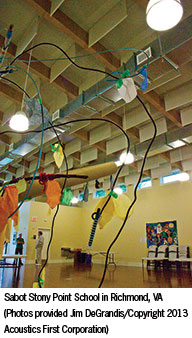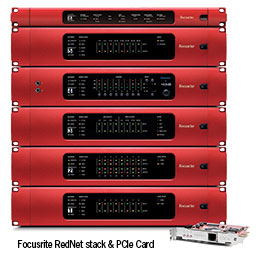
By Douglas Hood
For pastors, few audio concerns rank higher on the priority list than simply being heard (and more importantly, understood) on Sunday. To this end, a handful of audio and acoustical experts offer their best pastor-friendly advice.
 A few years ago, I interviewed several pastors while preparing a conference session. A pointer one wise pastor gave me still rings in my head: “Find people who are both willing and competent.”
A few years ago, I interviewed several pastors while preparing a conference session. A pointer one wise pastor gave me still rings in my head: “Find people who are both willing and competent.”
I’ve seen this wisdom play out in churches of all sizes. It’s entirely possible for the sound system operator to have a servant’s heart and be involved in the sound system ministry for all the right reasons. But, if he or she doesn’t possess the skillset to operate the system at the level the pastor expects, there can be tension.
A pastor should clearly define the audio expectations. Is Sunday morning expected to be 100-percent perfect, with zero tolerance for technical glitches? The answer might depend on the size of the church, the style of ministry, and the complexity of the worship program.
Accommodating congregants
If you want to spark an interesting conversation, take a poll to find out how loud is “loud enough.”
Equip the sound team with a simple and inexpensive piece of equipment: a sound meter. A very basic unit can be purchased for less than $100. Granted, this isn’t a highly calibrated piece of test equipment, but it can deliver a number you can reference.
Armed with your sound meter, put in a CD of worship music — or better yet, bring in your choir, band or worship team. Gather people in the room whom you trust to help make the decision about appropriate volume. As the music plays, have your sound system operator slowly turn up the sound. When it reaches a point where you feel it’s a good fit for your congregation, look at the number. Bingo! Now you have your magic number.
The key here is to make sure the team doesn’t look at the number during the test. Additionally, your venue will need a professionally designed and installed loudspeaker system.
 Now, direct your attention toward the stage
Now, direct your attention toward the stage
Some stages are cluttered with huge wedge monitors and lots of instrument amplifiers. For the most part, almost every church stage would benefit from an in-ear monitor (IEM) system. By eliminating some or all of the stage monitor speakers, the stage becomes much cleaner, visually. Second, for every stage monitor speaker removed, there’s one less speaker on the stage polluting the sound for the congregation. It’s a win-win.
As a bonus, IEM systems can be very affordable, and they come in many configurations. Moreover, these systems can be controlled from the sound booth or by the people on the stage. They can be hard-wired or wireless, and they can use inexpensive ear buds or custom ear molds made specifically for individuals.
Bring up some of these ideas at your next church tech team meeting. See what you can do to make your church’s audio experience the best it can be!
Douglas Hood is president of CSD Group, Inc. [csdus.com] in Fort Wayne, IN.
———————————————————————————————————————
To heed the Word, they’ve got to hear it first
By Eric Smith
Given the physics of sound propagation in enclosed spaces, no sanctuary is immune to acoustical problems. It will experience poor sound without proper treatment.
In houses of worship, job 1 for audio equipment is to deliver a clear message. The equipment you use is secondary to adequately controlling the room with proper acoustical treatments.
Having worked with some of the largest churches in the country — as well as thousands of smaller ones — our company has seen firsthand that solving a facility’s sound problems can be done, and often for less money than one might assume.
 It bears mentioning that some acoustical control devices have virtually no pertinence to houses of worship. In fact, certain types of treatments can make audio problems worse.
It bears mentioning that some acoustical control devices have virtually no pertinence to houses of worship. In fact, certain types of treatments can make audio problems worse.
Once the room is controlled, there are other facets of sound presentation to consider. Failing to do so can undermine your church’s presentation and negate the benefits of proper acoustics and top-quality gear.
Here’s an example: Drums, amps and monitors vibrate the structure, and then microphone stands transfer vibrations from the stage to the microphones. As a result, worshippers might say they can’t hear the sung vocals or spoken word clearly, or that the bass is muddy, thereby reducing intelligibility. This might be because sound-producing pieces of equipment aren’t properly isolated. These interact physically with the stage or surface they’re placed on and contribute negatively to the overall audio presentation.
Our company’s series of instant sound optimizers are patented isolation devices carefully engineered to allow the true sound of drums, amps, speakers, mics and more to come through. These devices negate resonance artifacts and decouple critical components from the structure, instantly purifying their tone in a quick, easy and affordable way.
The message is clear: Proper intelligibility and balance keep worshippers in the pews and allow them to absorb more of the important message you’re conveying.
Eric Smith is founder and president of Auralex Acoustics, Inc. [auralex.com] in Indianapolis.
———————————————————————————————————————
How to get simple, reliable and immaculate-sounding audio
By Adam Lebowski
Worship leaders care about delivering each word of the message with ease and in perfect clarity. Focusrite’s RedNet range of six Dante Ethernet-networked audio interfaces helps houses of worship spread the Gospel with simple, reliable and immaculate-sounding audio.
Supreme Sound Quality
RedNet is our company’s flagship range of modular Ethernet-networked audio interfaces that harnesses the power of Audinate’s tried-and-tested Dante digital audio networking system.
RedNet represents the new emerging standard for audio distribution. Using Ethernet, it transmits large channel counts very quickly, resulting in extremely high-quality audio combined with Internet-age flexibility.
 Bringing superb studio-grade Focusrite analog and digital I/O, and next-generation Focusrite remote-controlled preamps to Dante’s robust and reliable digital audio network, RedNet is a scalable, near-zero-latency audio distribution system.
Bringing superb studio-grade Focusrite analog and digital I/O, and next-generation Focusrite remote-controlled preamps to Dante’s robust and reliable digital audio network, RedNet is a scalable, near-zero-latency audio distribution system.
Minimize costs, maximize flexibility
Traditional audio wiring requires feet upon feet of expensive copper cabling. One discreet Ethernet cable substitutes for multiple copper audio cables, which streamlines installation and substantially reduces setup and maintenance costs.
Ideal for use in house-of-worship environments, RedNet allows a church to build a site-specific system on the fly, combining interfaces as (and where) they’re required, while making the best use of limited budget and resources. RedNet can be installed anywhere an Ethernet port is available; simply tap into your facility’s existing infrastructure without undergoing a major installation just for
audio equipment.
Widely compatible
RedNet is compatible with just about all major professional audio technologies which a church might already be using — MADI, Pro Tools/HD and any other Dante-enabled product, such as mixing consoles, power amps, DSP or speaker management systems. As such, RedNet can form the foundation of a new system or enhance an existing one.
RedNet’s modular “building block” design means churches can easily build a system for now that’s also poised for growth later. As your church grows in size, so too can your RedNet system. And because Ethernet is here to stay, RedNet is essentially a future-proof audio solution for your entire facility.
Reach more people
Using Ethernet makes it simple to broadcast church events to more people. Easily distribute audio from and to performance areas, overspill and cry rooms, or any other location equipped with a standard Ethernet port.
Adam Lebowski is marketing assistant at Focusrite Novation Inc. in El Segundo, CA. Find out more about how RedNet can work for your House of Worship at focusrite.com/RedNet/HOW.


